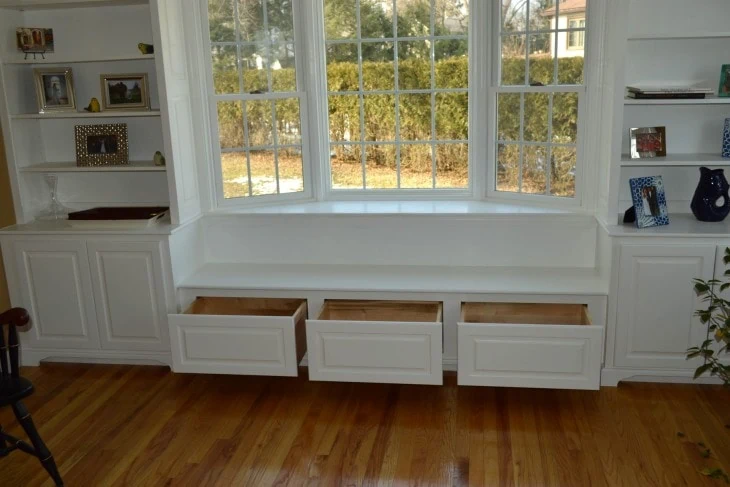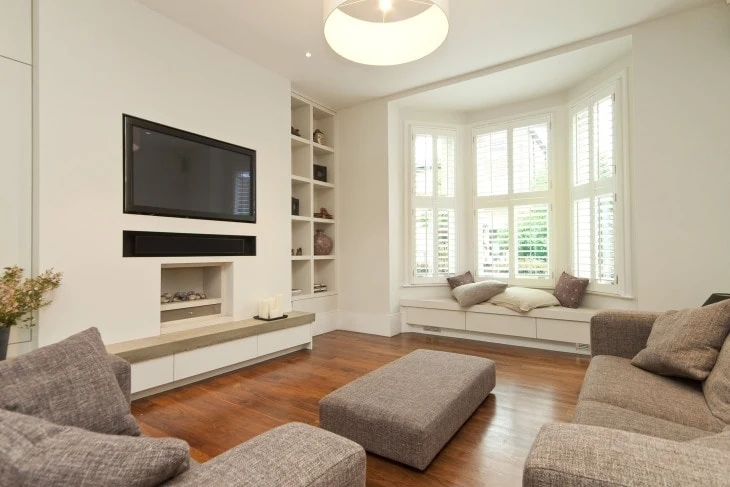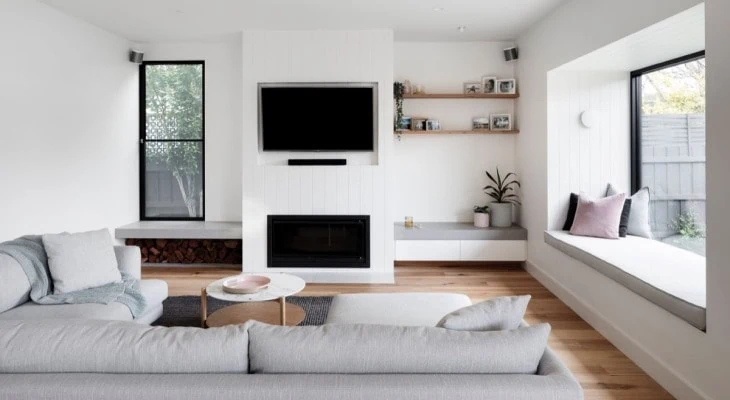Setting up or changing the layout of your living room furniture can alter the look and feel of the room. When it comes to electronics, you may be limited on where you can plug things in and hang them.
When you hang your TV in a living room with a bay window, you need to consider light angles in the room as well as the size of your other furniture. You want as little glare on the TV as possible while still keeping the room open.
Table of Contents
Things to Consider

Before you start placing your furniture, take note of a few things in your living room.
The Angle of the Light
Observe which wall receives the most light and how intense that light is at different times of the day. If you’ve just moved in, give yourself a full 24 hours to do this.
If your window is west or east-facing, you will most likely get intense and direct sunlight in either the morning or the evening.
If the window is North or South facing, the light you receive will be more indirect. This is beneficial because it gives you more options when hanging your TV.
Thankfully, any glare created on your TV can be greatly reduced or eliminated with thick, light blocking curtains.
The Size of Your Furniture
If you have a long sectional couch, chances are this will take up one entire side of your living room. Naturally, you will want to hang your TV in front of the couch as opposed to on the side.
Reclining furniture will also need to be positioned in a way that they can recline without being obstructed. So try to map out where you want your furniture in reference to your bay window and see if hanging the TV in front of the arrangement would be practical.
Other Obstructions
Any hallways or entry/exit points to the living room will limit the placement of your furniture in regards to your TV position.
Other obstructions, such as outlets and cable connections, could also inadvertently narrow your options. Though these can be solved by purchasing extension cords and the like, it may require a little extra planning.
Options for Hanging Your TV in Bay Window Room

There are pros and cons to almost every possible option for hanging your TV.
The Wall Across from the Bay Window
This is a great option if you have a North or South facing bay window. Since the lighting will be indirect when it filters into the room, you won’t have as much of a glare on the TV.
If you have an East or West-facing bay window, you will likely be subject to a harsh glare in either the morning or afternoon.
Be advised that this option will usually require you to place some furniture in front of your bay window, but if your furniture is minimal or non-reclining, it can still be a functional option.
The Wall Adjacent to the Bay Window
This is a safe option to reduce the most amount of glare on the TV, no matter the direction your window faces. It also gives you more options for furniture placement.
Having a bay window on one side of your TV and an open wall on the other side creates a visually appealing asymmetrical look to your living room. This optical illusion also helps the room to appear bigger than it is.
The alcove in the bay window can provide a perfect nesting spot for end tables as well, making the most use of the space.
Inside the Bay Window
Putting your TV in the bay window can actually be the most practical option in some instances. It leaves the rest of the room open for a wide array of furniture placement options.
You can place it on a stand directly inside the depression on the bay window wall or, if you have a deep enough ledge, place it directly on top.
If the bay window is off-centered or there is enough wall space above it, you can utilize a corner mount or a ceiling mount also.
Corner mounting your TV on the same wall as your bay window means you can arrange your furniture so that it faces the window without having a TV obstruct the beautiful view that it gives.
A ceiling-mounted TV leaves the entire alcove space open for other furniture, though it may require you to purchase extensions and cord hiders so they don’t hang down into view.
Final Thoughts
Bay windows are a stunning addition to living rooms and family rooms, providing ample natural light and a view of the outside. Though it may seem like it limits your ability to arrange your furniture and hang your TV, you still have plenty of options.

